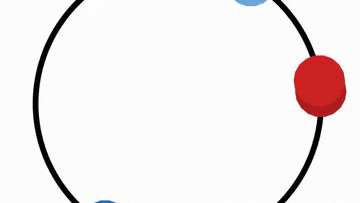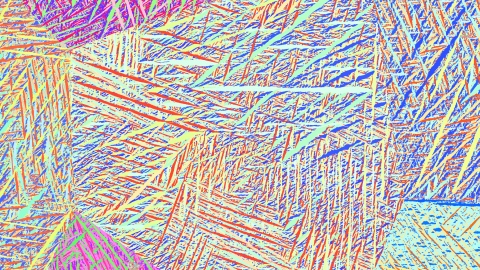16:00
Potential modularity of abelian surfaces
Abstract
I will give a gentle introduction to joint work in progress with George Boxer, Frank Calegari, and Vincent Pilloni, in which we prove that all abelian surfaces over totally real fields are potentially modular. We also prove that infinitely many abelian surfaces over Q are modular.
Abel in Oxford - Lectures by Abel Prize winners and members of the Abel Prize Committee
Abstract
Timetable:
1.00pm: Introductory Remarks by Camilla Serck-Hanssen, the Vice President of the Norwegian Academy of Science and Letters
1.10pm - 2.10pm: Andrew Wiles
2.10pm - 2.30pm: Break
2.30pm - 3.30pm: Irene Fonseca
3.30pm - 4.00pm: Tea and Coffee
4.00pm - 5.00pm: John Rognes
Abstracts:
Andrew Wiles: Points on elliptic curves, problems and progress
This will be a survey of the problems concerned with counting points on elliptic curves.
-------
Irene Fonseca: Mathematical Analysis of Novel Advanced Materials
Quantum dots are man-made nanocrystals of semiconducting materials. Their formation and assembly patterns play a central role in nanotechnology, and in particular in the optoelectronic properties of semiconductors. Changing the dots' size and shape gives rise to many applications that permeate our daily lives, such as the new Samsung QLED TV monitor that uses quantum dots to turn "light into perfect color"!
Quantum dots are obtained via the deposition of a crystalline overlayer (epitaxial film) on a crystalline substrate. When the thickness of the film reaches a critical value, the profile of the film becomes corrugated and islands (quantum dots) form. As the creation of quantum dots evolves with time, materials defects appear. Their modeling is of great interest in materials science since material properties, including rigidity and conductivity, can be strongly influenced by the presence of defects such as dislocations.
In this talk we will use methods from the calculus of variations and partial differential equations to model and mathematically analyze the onset of quantum dots, the regularity and evolution of their shapes, and the nucleation and motion of dislocations.
-------
John Rognes: Symmetries of Manifolds
To describe the possible rotations of a ball of ice, three real numbers suffice. If the ice melts, infinitely many numbers are needed to describe the possible motions of the resulting ball of water. We discuss the shape of the resulting spaces of continuous, piecewise-linear or differentiable symmetries of spheres, balls and higher-dimensional manifolds. In the high-dimensional cases the answer turns out to involve surgery theory and algebraic K-theory.
12:00
Potentials for A-quasiconvexity
Abstract
Many problems arising in Physics can be posed as minimisation of energy functionals under linear partial differential constraints. For example, a prototypical example in the Calculus of Variations is given by functionals defined on curl-free fields, i.e., gradients. Most work done subject to more general constraints met significant difficulty due to the lack of associated potentials. We show that under the constant rank assumption, which holds true of almost all examples of constraints investigated in connection with lower-semicontinuity, linear constraints admit a potential in frequency space. As a consequence, the notion of A-quasiconvexity, which involves testing with periodic fields leading to difficulties in establishing sufficiency for weak sequential lower semi-continuity, can be tested against compactly supported fields. We will indicate how this can simplify the general framework.
12:00
Stability of toroidal nematics
Abstract
When nematic liquid crystal droplets are produced in the form or tori (or such is the shapes of confining cavities), they may be called toroidal nematics, for short. When subject to degenerate planar anchoring on the boundary of a torus, the nematic director acquires a natural equilibrium configuration within the torus, irrespective of the values of Frank's elastic constants. That is the pure bend arrangement whose integral lines run along the parallels of all inner deflated tori. This lecture is concerned with the stability of such a universal equilibrium configuration. Whenever its stability is lost, new equilibrium configurations arise in pairs, the members of which are symmetric and exhibit opposite chirality. Previous work has shown that a rescaled saddle-splay constant may be held responsible for such a chiral symmetry breaking. We shall show that that is not the only possible instability mechanism and, perhaps more importantly, we shall attempt to describe the qualitative properties of the equilibrium nematic textures that prevail when the chiral symmetry is broken.
15:00
Non-existence and Non-uniqueness in the Kinetic Theory of Non-spherical Particles
Abstract
The Boltzmann equation is a well-studied PDE that describes the statistical evolution of a dilute gas of spherical particles. However, much less is known — both from the physical and mathematical viewpoints — about the Boltzmann equation for non-spherical particles. In this talk, we present some new results on the non-existence and non-uniqueness of weak solutions to the initial-boundary value problem for N non-spherical particles which have importance for the Boltzmann equation.
We present work which was done jointly with L. Saint-Raymond (ENS Lyon), and also with P. Palffy-Muhoray (Kent State), E. Virga (Pavia) and X. Zheng (Kent State).
12:00
Nonlinear cross-diffusion systems and gradient flows
Abstract
We will discuss nonlinear cross-diffusion models describing cell motility of two distinct populations. The continuum PDE model is derived systematically from a stochastic discrete model consisting of impenetrable diffusing spheres. In this talk, I will outline the derivation of the cross-diffusion model, discuss some of its features such as the gradient-flow structure, and show numerical results comparing the discrete stochastic system to the derived model.
Oxford Mathematician Christian Bick talks about his and colleagues' research into oscillator networks and how it could be valuable in understanding diseases such as Parkinson's.
Robin Wilson - Euler’s pioneering equation: ‘the most beautiful theorem in mathematics’
Abstract
Euler’s equation, the ‘most beautiful equation in mathematics’, startlingly connects the five most important constants in the subject: 1, 0, π, e and i. Central to both mathematics and physics, it has also featured in a criminal court case and on a postage stamp, and has appeared twice in The Simpsons. So what is this equation – and why is it pioneering?
Robin Wilson is an Emeritus Professor of Pure Mathematics at the Open University, Emeritus Professor of Geometry at Gresham College, London, and a former Fellow of Keble College, Oxford.
28 February 2018, 5pm-6pm, Mathematical Institute, Oxford
Please email @email to register



